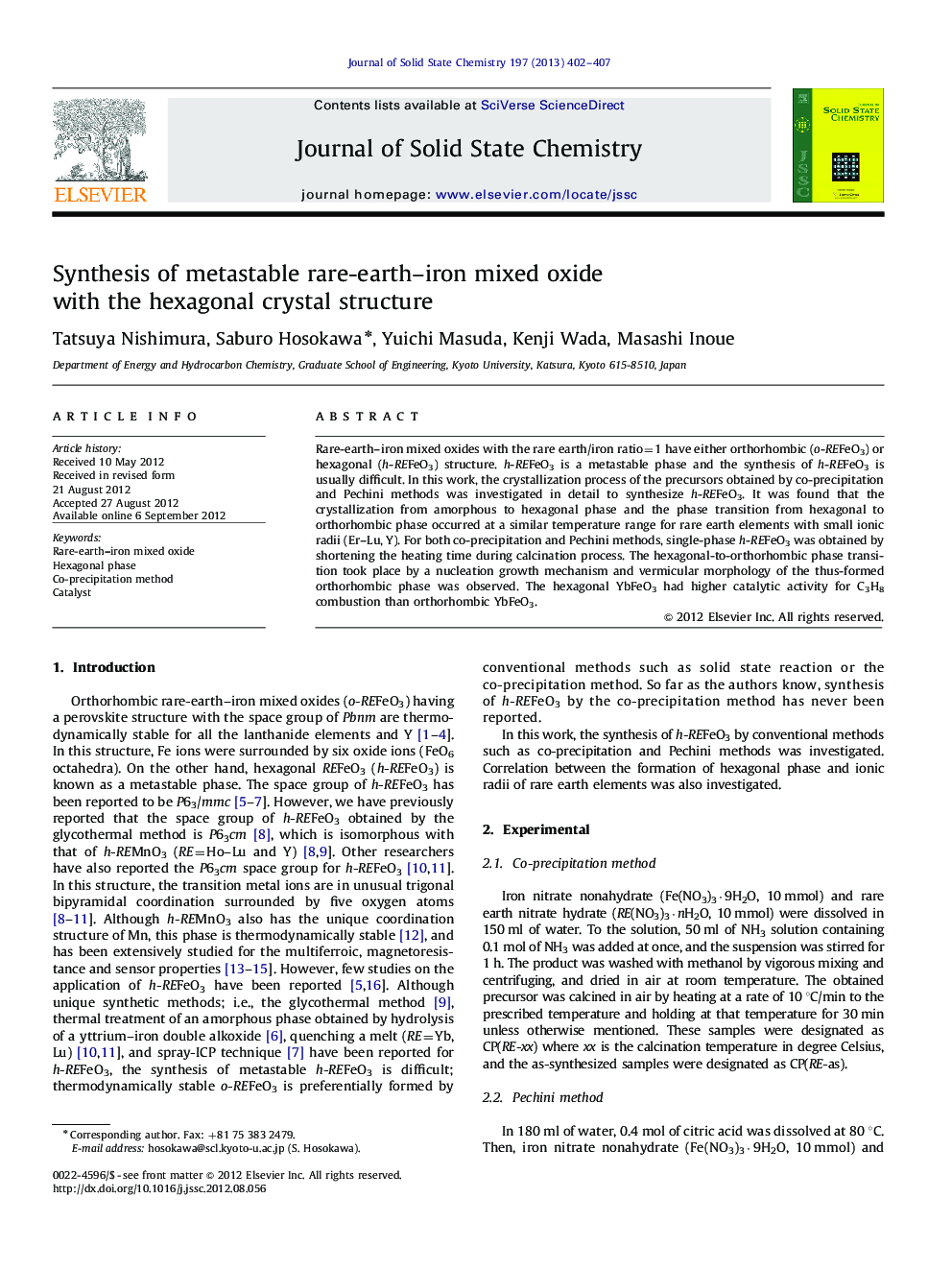| Article ID | Journal | Published Year | Pages | File Type |
|---|---|---|---|---|
| 1330124 | Journal of Solid State Chemistry | 2013 | 6 Pages |
Rare-earth–iron mixed oxides with the rare earth/iron ratio=1 have either orthorhombic (o-REFeO3) or hexagonal (h-REFeO3) structure. h-REFeO3 is a metastable phase and the synthesis of h-REFeO3 is usually difficult. In this work, the crystallization process of the precursors obtained by co-precipitation and Pechini methods was investigated in detail to synthesize h-REFeO3. It was found that the crystallization from amorphous to hexagonal phase and the phase transition from hexagonal to orthorhombic phase occurred at a similar temperature range for rare earth elements with small ionic radii (Er–Lu, Y). For both co-precipitation and Pechini methods, single-phase h-REFeO3 was obtained by shortening the heating time during calcination process. The hexagonal-to-orthorhombic phase transition took place by a nucleation growth mechanism and vermicular morphology of the thus-formed orthorhombic phase was observed. The hexagonal YbFeO3 had higher catalytic activity for C3H8 combustion than orthorhombic YbFeO3.
Graphical abstractAlthough the synthesis of metastable hexagonal REFeO3 by the conventional method is difficult, we found that this phase is obtained by shortening the heating time of the precursor prepared by co-precipitation method. Figure optionsDownload full-size imageDownload as PowerPoint slideHighlights► Synthesis of metastable REFeO3 with hexagonal structure by the co-precipitation method. ► Hexagonal REFeO3 is obtained for the rare earth elements with small ionic radii. ► Hexagonal-to-orthorhombic transformation of REFeO3. ► Catalytic activity of hexagonal REFeO3 for C3H8 combustion.
